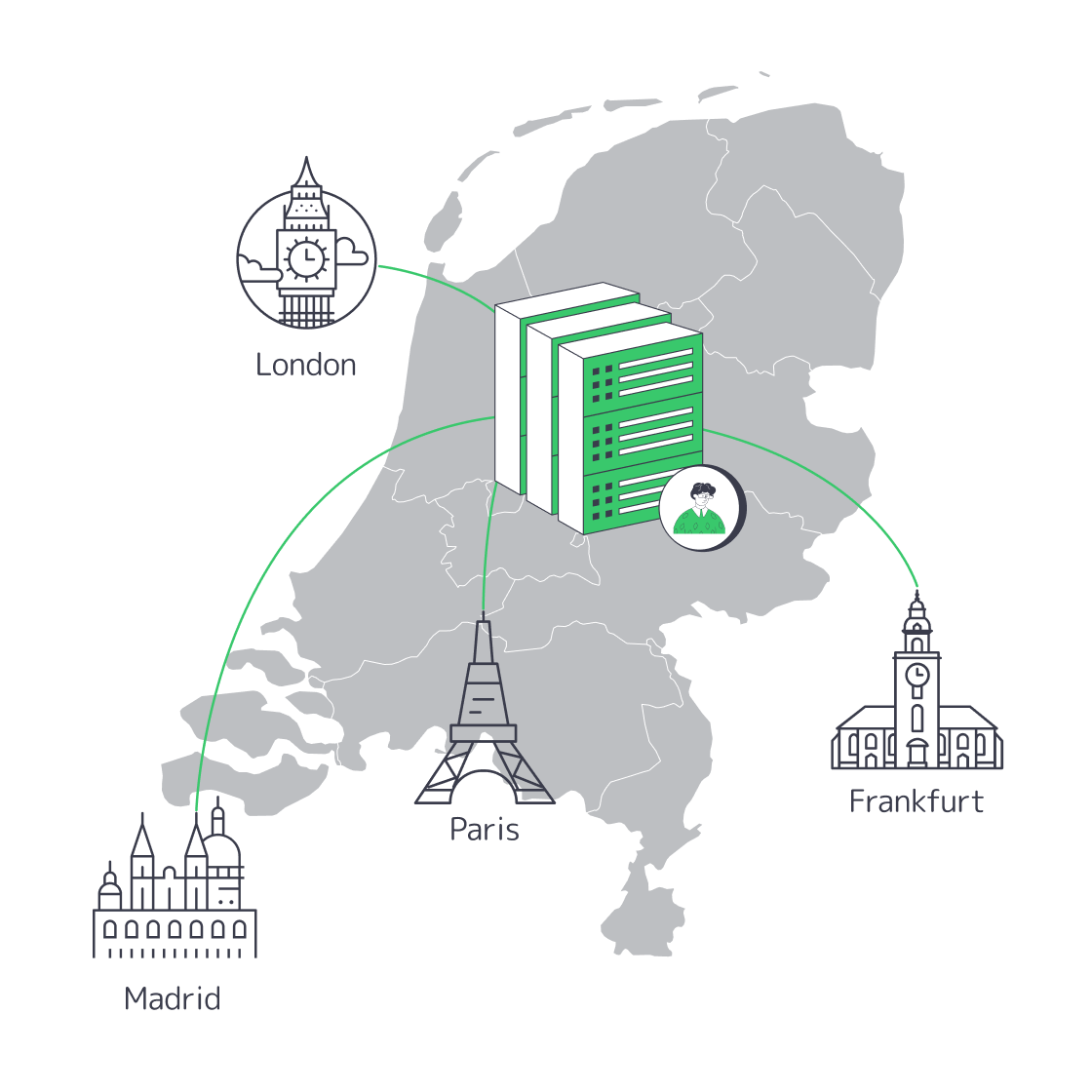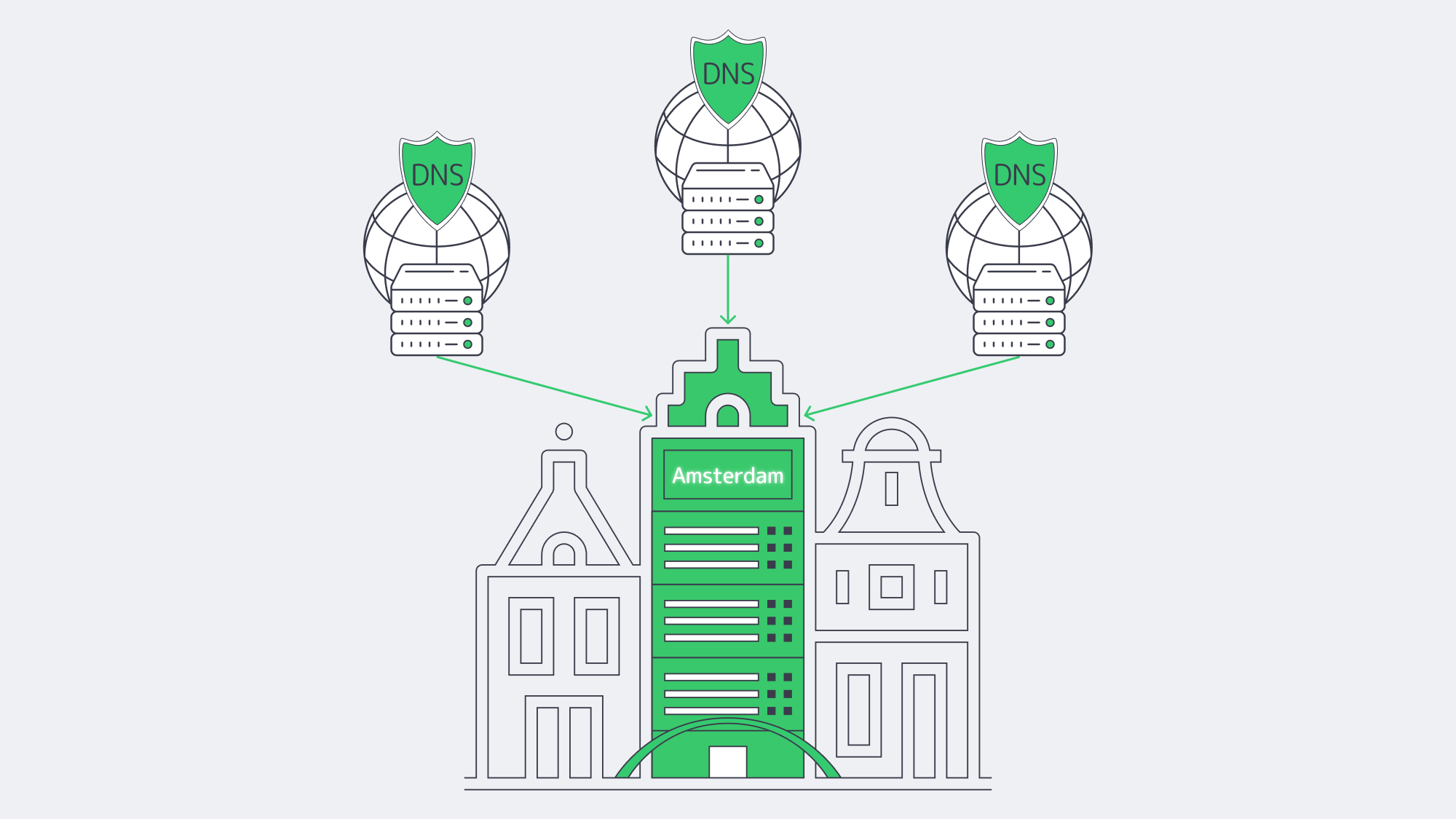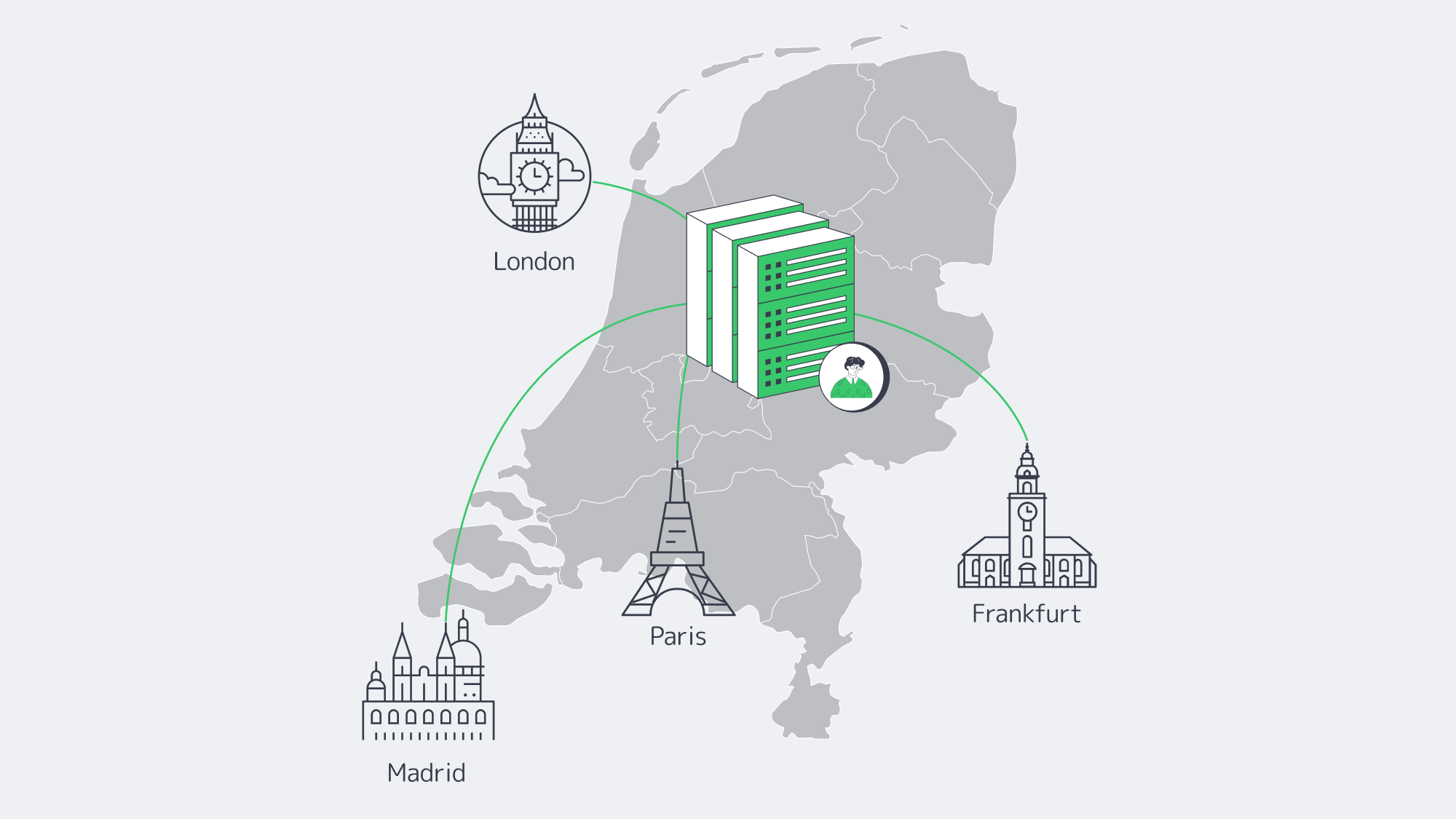Blog

Cut EU Latency with Amsterdam Dedicated Servers
Europe’s busiest shopping carts and real-time payment rails live or die on latency. Akamai found that every extra second of page load shaves about 7 % off conversions [1], while Amazon measured a 1 % revenue dip for each additional 100 ms of delay. [2] If your traffic still hops the Atlantic or waits on under-spec hardware, every click costs money. The fastest cure is a dedicated server in Amsterdam equipped with NVMe storage, ECC memory, and multi-core CPUs, sitting a few fibre hops from one of the world’s largest internet exchanges.
Choose Melbicom— 400+ ready-to-go servers configs — Tier IV & III DCs in Amsterdam — 55+ PoP CDN across 6 continents |
 |
This article explains why that combination—plus edge caching, anycast DNS and compute offload near AMS-IX—lets performance-critical platforms treat continental Europe as a “local” audience and leaves HDD-era tuning folklore in the past.
Amsterdam’s Fibre Grid: Short Routes, Big Pipes Network
Amsterdam’s AMS-IX now tops 14 Tbps of peak traffic [3] and connects 1,200 + autonomous systems. [4] That peering density keeps paths short: median round-trip time (RTT) is ≈ 9 ms to London [5], ≈ 8 ms to Frankfurt [6] and only ≈ 30 ms to Madrid [7]. A New-York-to-Frankfurt hop, by contrast, hovers near 90 ms even on premium circuits. Shifting API front ends, auth brokers or risk engines onto a Netherlands server dedicated to your tenancy therefore removes two-thirds of the network delay European customers usually feel.
Melbicom’s presence in Tier III/Tier IV Amsterdam data centers rides diverse dark-fiber rings into AMS-IX, lighting ports that deliver up to 200 Gbps of bandwidth per server. Because that capacity is sold at a flat rate—exactly what unmetered dedicated-hosting customers want—ports can run hot during seasonal peaks without throttling or surprise bills.
First-Hop Wins: Anycast DNS and Edge Caching Acceleration

Latency is more than distance; it is also handshakes. Anycast DNS lets the same resolver IP be announced from dozens of points of presence, so the nearest node answers each query and can trim 20–40 ms of lookup time for global users. Once the name is resolved, edge caching ensures static assets never leave Western Europe.
Because Melbicom racks share the building with its own CDN, a single Amsterdam server can act both as authoritative cache for images, JS bundles and style sheets and as origin for dynamic APIs. GraphQL persisted queries, signed cookies or ESI fragments can be stored on NVMe and regenerated in microseconds, allowing even personalised HTML to ride the low-latency path.
Hardware Built for Micro-Seconds—the Melbicom Way
Melbicom’s Netherlands dedicated server line-up centers on pragmatic, enterprise-grade parts that trade synthetic headline counts for low-latency real-world throughput. There are three ingredients that matter most.
High-Clock Xeon and Ryzen CPUs
Six-core Intel Xeon E-2246G / E-2356G and eight-core Ryzen 7 9700X chips boost to 4.6 – 5 GHz, giving lightning single-thread performance for PHP render paths, TLS handshakes and market-data decoders. Where you need parallelism over sheer clocks, dual-socket Xeon E5-26xx v3 / v4 and Xeon Gold 6132 nodes scale to 40 physical cores (80 threads) that keep OLTP, Kafka and Spark jobs from queueing up.
ECC Memory as Standard
Every Netherlands configuration—whether the entry 32 GB or the 512 GB flagship—ships with ECC DIMMs. Google’s own data center study shows > 8 % of DIMMs experience at least one correctable error per year [8]; catching those flips in-flight means queries never return garbled decimals and JVMs stay up during peak checkout.
Fast Storage Built for Performance
SATA is still the price-per-terabyte king for archives, but performance workloads belong on flash. Melbicom offers three storage tiers:
| Drive type | Seq. throughput | Random 4 K IOPS | Typical configs | Best-fit use-case |
| NVMe PCIe 3.0 | 3 – 3.5 GB/s | 550 K + | 2 × 960 GB NVMe (Xeon E-2276G, Ryzen 7) | hot databases, AI inference |
| SATA SSD | ≈ 550 MB/s | ≈ 100 K | 2 × 480 GB – 1.9 TB (most Xeon E) | catalogue images, logs |
| 10 K RPM HDD | ≈ 200 MB/s | < 200 | 2 × 1 TB + (archive tiers) | cold storage, backups |
* NVMe and SATA figures from Samsung 970 Evo Plus and Intel DC S3520 benchmarks [9];
** HDD baseline from Seagate Exos datasheet.
NVMe latency sits well under 100 µs; that is two orders of magnitude faster than spinning disks and five times quicker than a typical SATA SSD. Write-intensive payment ledgers gain deterministic commit times, and read-heavy product APIs serve cache-misses without stalling the thread pool.
Predictable Bandwidth, no Penalty
Melbicom offers unmetered plans — from 1 to 100 Gbps, and even 200 Gbps — so you never have to micro-optimise image sizes to dodge egress fees. Kernel-bypass TCP stacks and NVMe-oF are allowed full line rate — a guarantee multi-tenant clouds rarely match. In practice, teams pair a high-clock six-core for front-end response with a dual-Xeon storage tier behind it, all inside the same AMS-IX metro loop: sub-10 ms RTT, sub-1 ms disk, and wires that never fill.
Designing for Tomorrow, Not Yesterday

Defrag scripts, short-stroking platters and RAID-stripe gymnastics were brilliant in the 200 IOPS era; today they are noise. Performance hinges on:
- Proximity – keep RTT under 30 ms to avoid cart abandonment.
- Parallelism – 64 + cores erase queueing inside the CPU.
- Persistent I/O – NVMe drives cut disk latency to microseconds.
- Integrity – ECC turns silent corruption into harmless logs.
- Predictable bandwidth – flat-rate pipes remove the temptation to throttle success.
Early-hint headers and HTTP/3 push the gains further, and AMS-IX already lights 400 G ports [11], so protocol evolution faces zero capacity hurdles.
Security and Compliance—Without Slowing Down Performance
The Netherlands pairs a strict GDPR regime with first-class engineering. Tier III/IV power and N + N cooling deliver four-nines uptime; AES-NI on XEON encrypts streams at line rate, so privacy costs no performance. Keeping sensitive rows on EU soil also short-circuits legal latency: auditors sign off faster when data never crosses an ocean.
Turning Milliseconds Into Market Leadership

Latency is not a footnote—it is a P&L line. Parking workloads on dedicated server hosting equipped with NVMe, ECC RAM and multi-thread CPUs puts your stack within arm’s reach of 450 million EU consumers. Anycast DNS and edge caching shave the first round-trips; AMS-IX’s dense peering erases the rest; NVMe and XEON cores finish the job in microseconds. What reaches the shopper is an experience that feels instant—and a checkout flow that never gives doubt time to bloom.
Launch High-Speed Servers Now
Deploy a dedicated server in Amsterdam today and cut page load times for your EU customers.